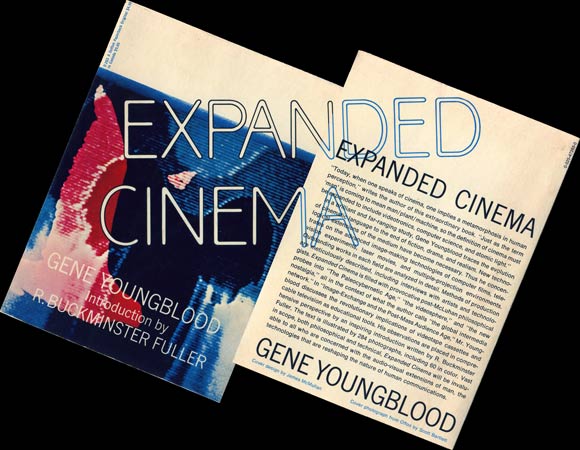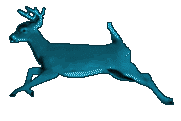Gene Youngblood: Expanded Cinema (1970)
Filed under book | Tags: · art, art history, computer film, computing, cybernetics, expanded cinema, experimental film, film theory, holography, intermedia, media art, multimedia, technology, television, video, video art

“The first book to consider video as an art form, was influential in establishing the field of media arts. In the book he argues that a new, expanded cinema is required for a new consciousness. He describes various types of filmmaking utilising new technology, including film special effects, computer art, video art, multi-media environments and holography.” (Wikipedia)
Part One: The Audience and the Myth of Entertainment
Part Two: Synaesthetic Cinema: The End of Drama
Part Three: Toward Cosmic Consciousness
Part Four: Cybernetic Cinema and Computer Films
Part Five: Television as a Creative Medium
Part Six: Intermedia
Part Seven: Holographic Cinema: A New World
Key words and phrases: Jordan Belson, expanded cinema, Nam June Paik, Buckminster Fuller, Stan VanDerBeek, videotronic, Ronald Nameth, Carolee Schneemann, John McHale, Expo 67, slit-scan, John Cage, light pen, Gene Youngblood, Otto Piene, Beflix, Howard Wise, KQED, Samadhi, WGBH-TV
Introduction by R. Buckminster Fuller
Publisher E.P. Dutton, New York, 1970
SBN 0525101527
432 pages
Reviews: Paul Cowen (Leonardo, 1972), Thomas Beard (Artforum, 2020), Caroline A. Jones (Artforum, 2020).
Analysis: Adam Sindre Johnson (2010, NO).
PDF (45 MB, no OCR, via Internet Archive, added on 2016-3-2)
PDF, PDF, PDF (5 MB, OCR)
PDF chapters
Joanna Zylinska: Bioethics in the Age of New Media (2009)
Filed under book | Tags: · bio art, bioethics, biopolitics, biotechnology, ethics

Bioethical dilemmas—including those over genetic screening, compulsory vaccination, and abortion—have been the subject of ongoing debates in the media, among the public, and in professional and academic communities. But the paramount bioethical issue in an age of digital technology and new media, Joanna Zylinska argues, is the transformation of the very notion of life. In this provocative book, Zylinska examines many of the ethical challenges that technology poses to the allegedly sacrosanct idea of the human. In doing so, she goes beyond the traditional understanding of bioethics as a matter for moral philosophy and medicine to propose a new “ethics of life” rooted in the relationship between the human and the nonhuman (both animals and machines) that new technology prompts us to develop.
After a detailed discussion of the classical theoretical perspectives on bioethics, Zylinska describes three cases of “bioethics in action,” through which the concepts of “the human,” “animal,” and “life” are being redefined: the reconfiguration of bodily identity by plastic surgery in a TV makeover show; the reduction of the body to two-dimensional genetic code; and the use of biological material in such examples of “bioart” as Eduardo Kac’s infamous fluorescent green bunny.
Zylinska addresses ethics from the interdisciplinary perspective of media and cultural studies, drawing on the writings of thinkers from Agamben and Foucault to Haraway and Hayles. Taking theoretical inspiration in particular from the philosophy of alterity as developed by Jacques Derrida, Emmanuel Levinas, and Bernard Stiegler, Zylinska makes the case for a new nonsystemic, nonhierarchical bioethics that encompasses the kinship of humans, animals, and machines.
Published by MIT Press, 2009
ISBN 0262240564, 9780262240567
240 pages
Key terms: bioethics, biopolitical, Stelarc, Homo Sacer, bioart, Jacques Derrida, Bernard Stiegler, Giorgio Agamben, Emmanuel Levinas, cybernetics, Peter Singer, ethics, Michel Foucault, Eugene Thacker, Cyborgs, moral panics, biopower, biotechnology, Cultural Studies
PDF (updated on 2012-7-25)
Comment (0)
